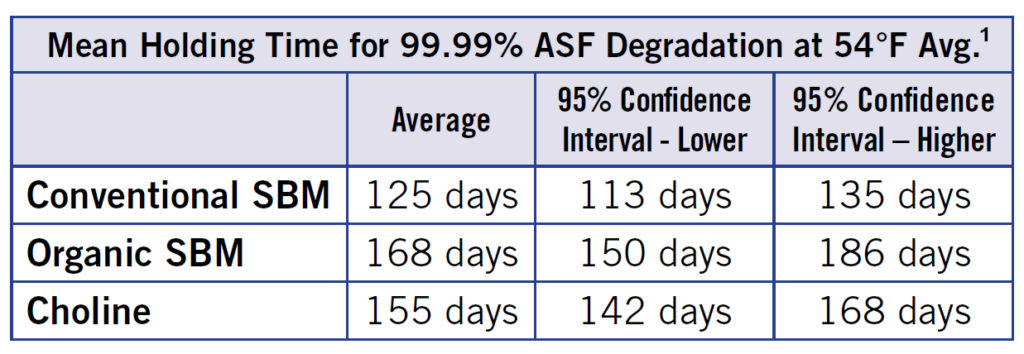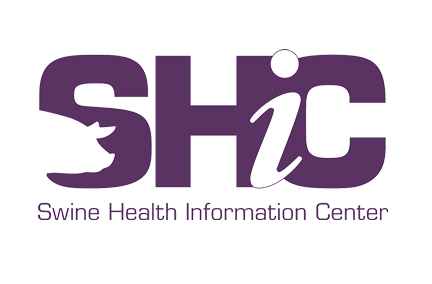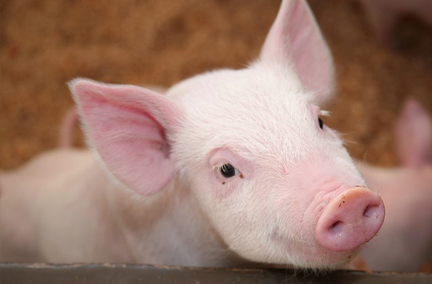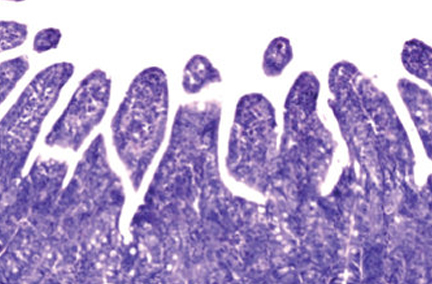

Studies have shown the theoretical ability for swine viruses to be transmitted through feed and feedstuffs. Ongoing research caused the Swine Health Information Center (SHIC), the National Pork Board, the National Pork Producers Council, and the American Association of Swine Veterinarians to offer updated and revised information for feed holding times to mitigate virus transmission. Feed component holding times could be one tool used in conjunction with other mitigations to enhance feed safety. Sourcing feed components from regions or countries of the world that don’t have ASF, or other diseases foreign to the US, will also negate potential risk.
The Institute for Feed Education and Research (IFEEDER), the public charity of the American Feed Industry Association, helped fund the initial research providing the best understanding of viral survivability in feedstuffs and details for mitigating risk to domestic herds via holding times, based on using Senecavirus A in the model.
The initial estimations, which were calculated in October 2018 then updated the first time in May 2019, now reflect new information from work done on African swine fever (ASF) half-life. Based on the conditions of transoceanic shipment from Asia, the following table displays the mean holding times calculated to provide 99.99% ASF degradation at 54 degrees F (average).

The information shows holding times details for general informational and educational purposes. They should not be considered as to be recommending or advocating any specific course of action. This information will be consistently reviewed and updated for the benefit of the US swine industry.
Complete information on the research leading to the holding time calculation is posted on the SHIC website. SHIC also provides information on questions producers should be asking their feed suppliers as part of their biosecurity protocol.
1 Stoian, A., Zimmerman, J., et al. Half-Life of African Swine Fever Virus in Shipped Feed. Emerging Infectious Diseases. 2019;25(12):2261-2263. doi:10.3201/eid2512.191002.

The Swine Health Information Center (SHIC) 2020 Plan of Work and budget were approved by the Board of Directors on January 30, 2020. “We continue to focus on protecting the health of the US swine industry which is extremely important,” remarked Daryl Olsen, DVM, chair of the SHIC Board of Directors. “We’re going to build on the success we’ve had over the last several years. We look at the risks out there and know both need and opportunity are huge.” SHIC’s 2020 Plan of Work directs the investment made by US pork producers, through the National Pork Board’s initial financial support of the organization in 2015, to protect and enhance the health of the US herd. The SHIC Board of Directors considers this investment while setting priorities for the coming year as part of its ongoing stewardship.
Olsen says SHIC’s objectives are captured in the organization’s mission statement: the mission of the Swine Health Information Center is to protect and enhance the health of the United States swine herd through coordinated global disease monitoring, targeted research investments that minimize the impact of future disease threats, and analysis of swine health data. Olsen also notes SHIC, working with the National Pork Producers Council, was awarded a USDA grant to study African swine fever (ASF) in Vietnam. The realization SHIC was awarded the responsibility of leading this major project is confirmation the organization is doing the right thing for US pork producers in Olsen’s opinion.
The 2020 Plan of Work will direct SHIC’s activities in pursuit of those priorities, building on 2019 accomplishments. SHIC remains nimble and responsive moving forward with an emphasis on prevention and preparedness to address emerging domestic or foreign animal disease challenges as it works in concert with the other industry organizations to fill research and information gaps.
A coordinated disease reporting system will help ensure that an emerging disease will not go undetected. SHIC will continue its Global and Domestic Swine Disease Monitoring Report projects and will respond to feedback asking for them to be enhanced. Additional programs and projects to continue to offer cutting edge information about diseases around the world, including in the US, are planned to be rolled out. And quick detection is key to quick response. Continued support for further diagnostics in difficult cases, characterization of the pathogenicity of emerging, novel pathogens, and the ability to rapidly respond with the Rapid Response Corps is also in the Plan of Work. Farm biosecurity, especially at the truck-farm interface that results from multiple marketings, is also a priority for SHIC in 2020.
SHIC’s officers were re-elected during the Board of Directors meeting as well. Daryl Olsen, DVM, will continue as Board chair. Howard Hill, DVM, remains vice chair and Mark Greenwood will serve as SHIC’s secretary/treasurer again in 2020. The Board, along with the experts in SHIC’s two Working Groups, provide direction and essential input for the organization’s continued success.

The Swine Health Information Center (SHIC) funded the Morrison Swine Health Monitoring Project (MSHMP), based at the University of Minnesota, to achieve four objectives benefiting US swine herd health. In MSHMP’s annual update, it was confirmed the study provides valuable insight in these areas: developing capacity to capture and analyze movement data, porcine reproductive and respiratory syndrome virus (PRRSv) sequence evolution and impact, monitoring trends in pathogens incidence and prevalence, and finally, expanding producer participation in monitoring work for greater inclusion. Due to SHIC’s funding, MSHMP has provided new information for better monitoring and prediction of disease impacts.
One objective of the SHIC-funded work with MSHMP involves developing capacity to capture and analyze movement data. Newly implemented technology has been generating truck movement data consistently. A total of 12 vehicles (eight trucks and four trailers) are being monitored in one of the MSHMP participating systems. Data structure and processes for downloading data are still being understood and procedures developed to facilitate the data analysis. Data will help producers improve their movement plans to possibly reduce transport-related spread of pathogens.
MSHMP’s work has resulted in a successful PRRSv sequence capturing process. Analysis continues and their database currently has 30,603 sequences from 31 systems. Preliminary analysis showed that PRRSv sequences cluster in time and space as expected. Similarity analysis was conducted to understand how viruses have changed when compared to the reference strain VR2332. The majority of viruses are 10% to 15% different while a subset of viruses lie between 2% to 5%. Study of the different sequences will help researchers understand which of these viruses may change and continue to spread, providing preventive information for producers.
MSHMP monitors PRRSv, porcine epidemic diarrhea virus (PEDv), porcine delta coronavirus (PDCoV), Senecavirus, and central nervous system associated viruses in time and space. The 2018-2019 season ended with the second lowest PRRSv breeding herd cumulative incidence (21.3%) during the last 10 years of monitoring. MSHMP also noted herds that break remain in category 1 for longer periods. PEDv followed the same trend and maintained a low level of cumulative incidence with few cases being reported throughout the country. PDCoV continues to be present, clustered in specific regions. Their work also revealed PDCoV incidence is low as cases of this disease are not reported frequently. Information on these diseases, their prevalence and movement within the reporting systems, helps producers make decisions about movement in their own system.
The fourth SHIC-funded objective is to expand producer participation in the project. Expansion continues with two additional production companies being part of the MSHMP project, bringing the total to 38. The search for new potential participants will continue.

Swine acute diarrhea syndrome coronavirus (SADS-CoV), related to the bat coronavirus HKU2, was associated with severe outbreaks of diarrhea with high mortality rates in pigs in China in 2018. Porcine epidemic diarrhea virus (PEDV) and porcine delta coronavirus (PDCoV) are closely related to SADS-CoV. After PEDV and PDCoV were diagnosed in the US with devastating consequences, the swine industry saw the emergence of SADS-CoV in Asia as a potential concern. Should SADS-CoV be introduced into the US as PEDV and PDCoV were, the industry must be prepared to rapidly implement adequate control strategies to mitigate the impact of the disease to pork producers. The Swine Health Information Center (SHIC) is supporting development of rapid diagnostic tools for the timely detection of swine acute diarrhea syndrome coronavirus (SADS-CoV) nucleic acid and/or antigens in clinical samples.
One of the first tools to combat emerging infectious disease agents is a diagnostic assay capable of rapidly detecting such pathogens. This includes a real-time multiplex PCR for SADs-CoV, PEDV, and PDCoV as well as development of antibody reagents for the virus. In a report published in January 2020, researcher Dr. Diego Diel of Cornell University said the project to develop these tools is on track with good progress on both objectives. Preliminary qPCR validation has been completed and polyclonal antibodies specific for the SADS-CoV proteins are now available. While the reagents need to be validated, their availability will allow proactive interventions by the swine industry should SADS-CoV ever enter the US.
Successful completion of the study will result in a diagnostic tool set to detect SADS-CoV in clinical samples. Availability of a multiplex real-time PCR for SADS-CoV, PEDV and PDCoV will allow precise and rapid diagnosis of specific SEC associated with outbreaks of enteric disease in pigs. Antibodies developed will allow the development of serological assays as well as antigen detection assays for SADS-CoV sero-surveillance or for the direct detection of the virus.

Swine Innovation Porc, a non-profit corporation in Canada, facilitates research in the Canadian swine sector. Their goal is enhancing the profitability and sustainability of the Canadian pork industry. In 2019, Swine Innovation Porc developed a Coordinated African Swine Fever (ASF) Research Working Group and the Swine Health Information Center (SHIC) was invited to participate. Over six months, the ASF Working Group created an ASF-related research priorities document which was completed in December 2019. The Canadian Pork Council will use the document in its strategic planning activities for ASF. Coordination with our international neighbor proves valuable as both countries work to achieve prevention and preparedness.
As this process began, the ASF Working Group developed a framework outlining four pillars:
This outline resulted in collection of information regarding research gaps in addressing the threat of ASF which was provided to the ASF Working Group, a value to the US pork industry, as well. The Group facilitates coordination between scientific experts, industry leaders, and Canadian federal agency partners.

In the February report, we learn porcine reproductive and respiratory syndrome (PRRS) positive cases reported in January were down compared to December in all age groups and sample types. This data corresponds to the Morrison’s Swine Health Monitoring Program which reports a relatively low PRRS incidence in sow farms compared to previous years. The overall percentage of porcine epidemic diarrhea virus (PEDV) RNA positive cases in January was slightly up from December with increased detection observed in cases from Minnesota and North Carolina. The overall percentage of porcine deltacorona virus (PDCoV) positive cases in January was slightly down from December. Both PEDV and PDCoV RNA positive cases are within forecasted levels for this time of year. The overall percentage of Mycoplasma hyopneumoniae positive cases in January was slightly up from December, mostly driven by samples with unknown information for age category. Read the entire report here.

In the February report, we learn Serbia confirmed new cases of African swine fever (ASF) near its border with Bulgaria and Romania, a first in wild board in this country. In Italy, illegal Chinese pork was seized, arriving hidden under a shipment of vegetables arriving in Padoa. Classical swine fever (CSF) was diagnosed on the island of Okinawa, the first outbreak there since 1986. Experts said that the disease may have entered through leftover food scraps. In Russia, a new foot-and-mouth disease (FMD) outbreak was confirmed close to the Chinese and Mongolian border. A high level international conference on the future of pork production and ASF was held in Berlin, Germany, on January 17, 2020. The goal was fostering coordinated global actions to reduce the impact of ASF on pork production and international trade. Read the entire report here.
Copyright 2025 | Swinehealth.org | Website by Heartland Marketing Group